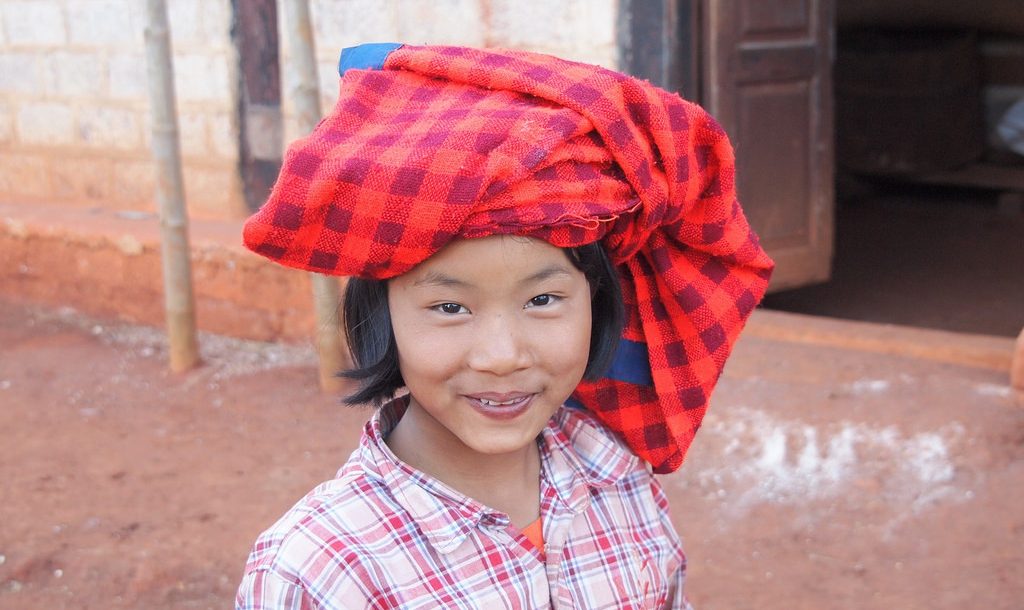Excluding women in Myanmar from equal and meaningful participation in the transition to peace could prevent it from ever being achieved, Jenny Hedström writes.
Women are, literally and figuratively, on the frontlines of the many conflicts raging in Myanmar, but are prevented from participating in the peace process in any substantial way. This year I have travelled around Myanmar meeting women from ethnic minority and majority communities to understand why they aren’t included, and what issues and insecurities they encounter. This is what they told me.
Often, because women tend to be responsible for the wellbeing of their children, they can’t attend meetings and other political events unless they receive extra funding. This money is needed to cover the cost of babysitting or travel costs for children and child-minders. Another problem is that when meetings are held in major cities or abroad, women without identity documentation living in rural communities are effectively excluded from participating.
Problematically, the international community tends to limit its meetings to women who can travel or who are well known already and speak good English. The government on the other hand typically only engages with women who speak Burmese, thus excluding women who speak only minority languages. Funding must, therefore, include generous translation and travel costs to enable women from minority communities to attend meetings and receive information in their ethnic languages to make informed decisions.
Worryingly, women frequently experience physical obstruction to their participation. I have been told that male leaders might leave the room or remove their hearing aids when women present. Meetings to engage in political dialogue are sometimes held in areas women are told it is too dangerous for them to travel to. Women are also typically invited at very late notice to meetings, meaning that if they go, they are unable to prepare properly. Consequently, at a minimum, the date, time and location of the meeting must be announced with due notice – and with women’s input – so that they have time to prepare themselves and take care of their family responsibilities.
The leaders of many of the ethnic armed groups simply do not think that political issues are relevant to women, and they impose arbitrary qualifications for participation in the peace process. One example of this is stipulating a minimum number of years’ military involvement as a prerequisite for participation. This results in disqualifying women from participation because they tend to leave the army when they get married.
The Government has made even less of an effort to include women. At the most recent 21st Century Panglong Conference, the Government’s delegation was 92 per cent male. Women’s groups were invited to be observers only. It seems that despite women and men both participating in and experiencing wars in many ways, only men get to use their experience as grounds for contributing to the peace processes. This is concerning as violence against women is ultimately rooted in women’s inequality in accessing justice, leadership and decision-making opportunities.
Of course, norms framing men as being natural leaders don’t help either. This means that when women do get invited to participate in peace talks or political discussions, they are typically requested to do the cooking or decorating for the event. Although some women do get asked to provide substantial input – well-known examples of this include Mi Sue Pwint from the All Burma Students Democratic Front and Nang Raw Zakhung from the Nyein Foundation – a critical mass constituting a minimum of 30 per cent women is needed to enable effective change. This must be operationalised throughout the political dialogue, without exception.
Earlier this year I travelled to Kachin State, where currently about 87,000 people are fleeing conflict. The impact on Kachin women and girls has been particularly stark: local organisations I met with report an increase in forced marriages and the trafficking of young women and girls. Weekly skirmishes are taking place in Shan State, where both medical aid and food supplies have been restricted from reaching internally displaced people camps – where mostly women and children live – since July this year.
Meanwhile, in Rakhine State, discrimination against the Rohingya community has resulted in women experiencing rape and other forms of sexual violence perpetrated by members of the Myanmar Army. Recently women from Karenni communities told me about how increased militarisation and widespread drug use in their areas have led to an upsurge in rape and sexual harassment. Unfortunately, the continued exclusion of women from key decision-making processes means that these concerns are not heard or accounted for in any meaningful way.
Last month’s United Nations Security Council meeting on Women, Peace and Security once again reaffirmed the crucial role women play in efforts towards achieving peace. It is time that the Myanmar government, the leadership of the ethnic armed organisations and those in the international community supporting current peace efforts in the country realise that women’s equal and meaningful participation in transitions from conflict to peace is the most important, and yet most overlooked, component for achieving a peace that is not only sustainable but lasting and just. As Tin Tin Nyo, from the Burmese Women’s Union, so succinctly put it: without women, there will be no peace.
Jenny Hedström is a PhD student at Monash University and the editor of International IDEA’s report Women in Conflict and Peace, available in English and Myanmar (selected chapters). The views expressed in this article are the author’s and do not necessarily represent the views of International IDEA, its Board or its Council Members.
 Facebook
Facebook  Twitter
Twitter  Soundcloud
Soundcloud  Youtube
Youtube  Rss
Rss 